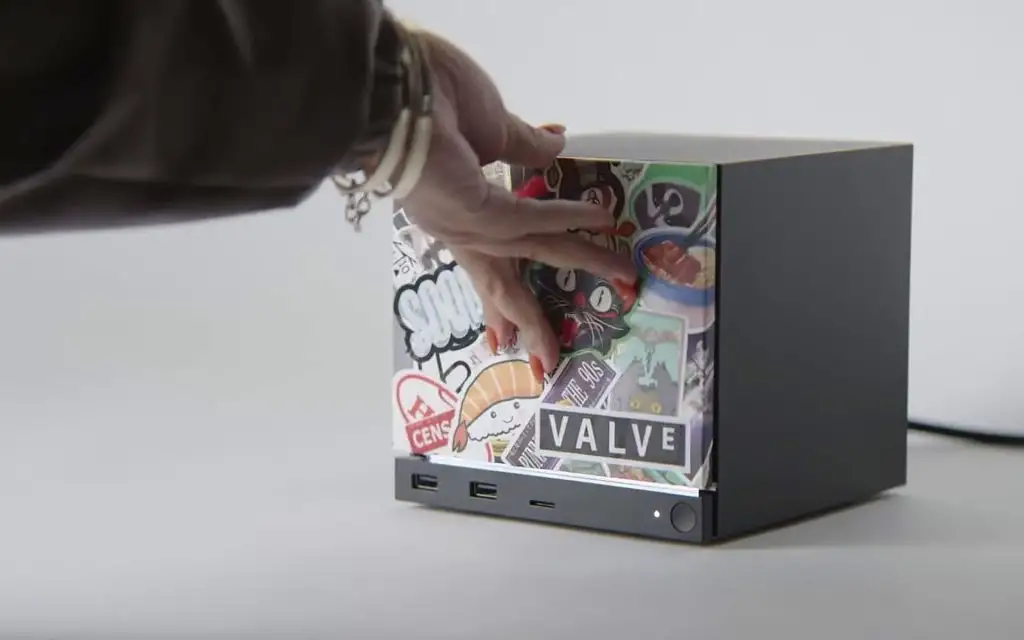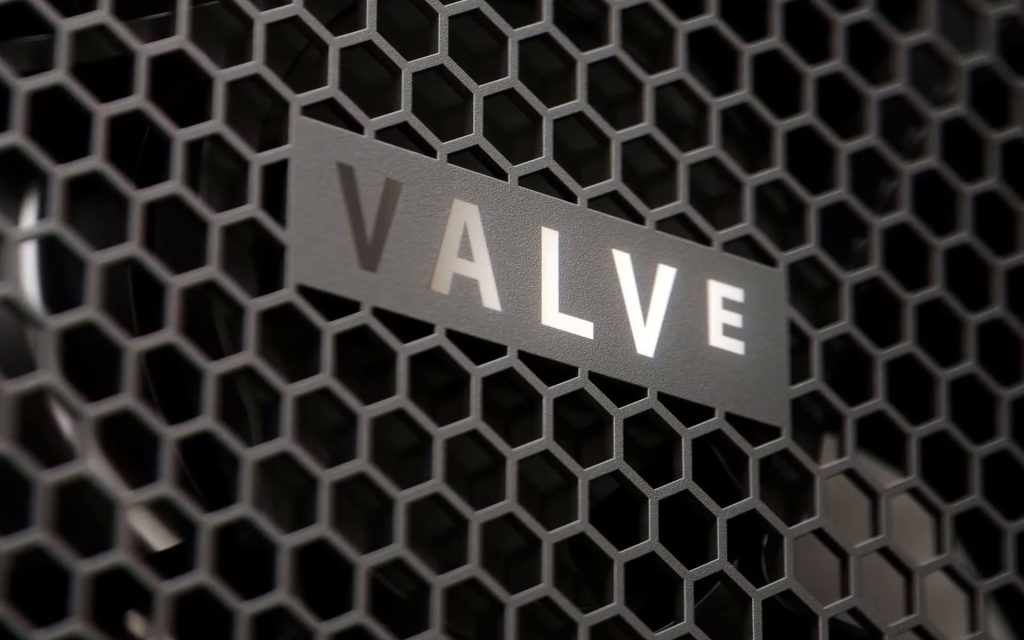The Steam Machine will help lots of PC gamers leave Windows behind
Valve’s incoming gaming console for the living room impresses, here’s how it could bring about major changes in 2026 and beyond
KOSTAS FARKONAS
PublishED: November 14, 2025

There have been whispers on the Web over the best part of a year but it’s now official: after redefining the PC handheld market with the universally-loved, ever-evolving Steam Deck, Valve is now looking into having a similar effect on the gaming console market with the Steam Machine. It might only seem to be a natural next step for a platform that’s been curated and tuned for almost four years – but it could also be exactly what PC gaming needs in order to break away from the increasingly damaging Windows monopoly.
There’s a lot to unpack here, because the Steam Machine’s capabilities – and Valve’s choices that shaped them – will largely define not just its own prospects, but the future prospects of a whole new category of similar gaming systems. These PC-based but un-PC-like devices will mean different things to different people, so putting them in the right context early on is absolutely necessary. Here’s why.
The Steam Machine specs and what they mean
First off, the obvious stuff: Valve’s new device is based on somewhat older tech, an AMD Zen 4 CPU sporting six cores (four of those are low-powered) and twelve threads running at “up to” 4.8 GHz. The low power draw (just 30W) means that it will be operating at lower speeds most of the time.
The Steam Machine comes with 16GB of DDR5 memory of unknown MT/s (we’ll find out when the first dev kits go out) and either a 512GB or 2TB SSD (probably an NVME Gen4 rather than Gen5). The SSD is easily swappable for bigger/faster models (the SO-DIMM memory is upgradeable too but the device must be disassembled for that).
The CPU is powerful enough for practically any PC game, but the same cannot be said for the GPU Valve chose for the Steam Machine. That is a “semi-custom” AMD RDNA3 model sporting 28 compute units and 8GB of VRAM. Its processing power is putting it somewhere between the Radeon RX 6600 and the RX 7600 – which is actually in the same ballpark as the GPU found in the base PS5 – but the 8GB of VRAM are widely considered to be a limiting factor in current demanding PC games, so one can’t easily imagine it performing really well with future ones.
Unlike the PS5, the Steam Machine’s memory is not unified, so developers only have that 8GB of VRAM to work with. Valve clearly made this choice in order to keep the cost of its new device down, but that will most probably mean that this is not a 4K/60 gaming console in practice, as the company suggests. To its credit, Valve is adding “with FSR” when referring to that – clearly implying that upscaling is extensively used in order to hit that target – but this comes with certain caveats too (such as the occasional hit in image quality and/or input lag).
On every other front regarding the Steam Machine’s hardware – build quality, expandability, connectivity – there’s hardly any room for complaint and the device even manages so sport some interesting and unique elements of its own (Valve’s official product page offers enough information on most of those).
The 8GB of graphics memory the Steam Machine sports sound rather limiting now , but they may be just enough for its intended purpose.
Those 8GB of VRAM are the most-discussed hardware aspect of the Steam Machine but it’s too early to say whether they will be an actual problem for three reasons. One: neither the hardware or the software of the device are absolutely finalized – and small changes may matter in the long run. Two: current estimates of performance of this particular CPU/GPU combination are based on Windows PCs playing Windows games, but the same games often perform better or even much better in SteamOS. Three: FSR4, AMD’s best upscaling tech in terms of both performance and image quality, is not officially confirmed to work with RDNA3 yet, but it is expected to in 2026. If that comes to the Steam Machine, it will greatly help with the perceived performance of demanding PC games.
Until the final product is in tech reporters’ hands, though – so we can get a clear picture of how it performs in a range of different titles – and FRS4 is confirmed for the Steam Machine, this seems to be more of an “upscaled 4K/60 with plenty of asterisks” gaming PC than anything else. On paper it sits somewhere between the Xbox Series S and the base PS5, so it will be up to Valve’s software engineers to heavily optimize SteamOS for this specific hardware in order to get the absolute best out of it performance-wise.
The sub-$1000-dollar question: how low can the Steam Machine go?
So the Steam Machine – to nobody’s surprise, really – is not a really powerful system. Then again, neither is the Steam Deck, the system which has attracted way more sales than any other PC handheld ever because of three important reasons: it works flawlessly, it offers decent battery life and it comes with an attractive price tag. The Steam Machine is based on the same operating system and user interface, it doesn’t have to worry about battery life, so… yes: its value relative to its capabilities will ultimately come down to pricing.

This is where it gets tricky. Valve has not yet finalized its plans regarding the price of this device (it probably has to do with both the current memory modules’ fluctuating cost and the unpredictable US tariffs) so we’ll know more about all that in early 2026, closer to the product’s launch. Thanks to a mix of rather confusing reports and commentary from various sources, though, one cannot even form a clear picture regarding Valve’s intentions on the matter, something that is highly problematic for a number of reasons.
According to some, the company claimed that “the Steam Machine will not compete with consoles in pricing”, which would mean that a sub-$500 or sub-$600 price point is out of the question. Others claim that the company will position it close to entry-level gaming PCs, which could mean anything between e.g. $500 and $900. Some believe that this hardware, along with its custom cooling and the brand-new Steam controller, simply can’t be had for less than $1000, while still others think that it could be built at scale for less than $449, so if Valve wanted to price it aggressively they could even go as low as $499 with the 512GB Steam Machine.
The asking price of this particular product is important for a few different reasons. It will have to make sense against e.g. a compact AMD-based gaming PC enthusiasts can build and install the free official SteamOS on. It will also have to be in line with what consumers expect of Valve, the company that’s been offering the Steam Deck for what’s basically a bargain. Plus, it will have to be in line with the Steam Machine’s performance capabilities as described earlier, which are promising but not immediately impressive in the context of long-term use.
The Steam Machine will probably not have the Deck-like disrupting effect Valve hopes it will if it costs much more than $799.
On one hand, this is a very well-designed, very well-built system that remains somewhat upgradeable while working quietly and drawing less power than the PS5 Pro. It would be extremely difficult to just go out and put together something as nice or as dense as the excellent device Valve presented to various outlets – and it would cost an arm and a leg, even if it could be done. The Steam Machine is a consumer product built at scale to look great in a living room… and good-looking small-factor PCs do not come cheap.
On the other hand, this being a consumer product, it needs to attract as many customers as possible – so it simply cannot cost much more than what most consumers think a gaming console (not a gaming PC) should cost. Even with this year’s crazy US tariffs situation taken into account, then, the Steam Machine’s price point should – in theory – be anywhere between $499 and $799. At $499 or $549 it would be a Steam Deck-like bargain, at $799 it would be expensive but still fair, all things considered. A much higher price point than that would make the Steam Machine a PS5 Pro-like hard sell, which is not what anybody would like to see – including Valve.
What the Steam Machine will mean for console gaming in 2026
After taking all of the above into account, then, what are we to make of Valve’s new console-like gaming PC? Just noting that “a lot will depend on that price tag” is hardly helpful, after all: it’s pretty much a given that all of the company’s initial stock will sell out at launch, even based on novelty alone (let alone the fact that this would make for a great sub-$800 Linux-based general-use PC too). The first wave of Steam Machine sales will most probably have little to do with how much it will cost, which is fine… for a niche product.

This is not supposed to be a niche product, though – Valve hopes for more than that. That’s where things get interesting: the Steam Machine is based on the same user experience loved by around 5 million customers and Valve has stated that almost 15% of Steam Deck owners use it connected to a TV or monitor. These consumers would probably be interested in playing all their favorite games on the big living room TV using a system that’s six times more powerful that the Steam Deck. Assuming that the Steam Machine delivers on its potential and launches without any serious issues, that’s around 500.000 potential sales right there.
If the Steam Machine manages to build enough momentum during 2026 – especially if assisted by frequent SteamOS updates – then it could hit one million units sold worldwide by Christmas 2026. It’s not a huge number, yes, but it’s high enough for SteamOS to achieve proper gaming platform status and – along with the Steam Deck user base – finally secure the support it deserves from big publishers in terms of online multiplayer functionality. The Steam Machine/Steam Deck would then be truly viable alternatives to Windows-based PCs, something that Microsoft would definitely not like to see… but also something it can do nothing to prevent either.
Speaking of Microsoft, it’s fair to say that in this scenario – that is, should the Steam Machine find substantial success in the gaming market – it is the very company that has the most to lose. There’s already a lot of displeasure or anger in the gaming community towards Windows 11 and SteamOS currently looks like the most promising alternative (macOS is still a distant third despite recent progress on that front). Not all PC gamers will migrate from Windows to Linux all of a sudden, obviously, but some will – and those are most probably never coming back if SteamOS continues to evolve at the pace it currently does.
The Steam Machine could be precisely what many PC gamers have been waiting for in order to abandon the Windows ecosystem once and for all.
Given time, SteamOS might steal away just enough PC gamers to make the rest consider their options – and that is something Microsoft would rather not see happen. Also, in terms of game sales, every AAA Microsoft Game Studios title is now on Steam – so PC gamers will still have access to those outside the Microsoft Store or a PC Game Pass subscription. Microsoft is still getting 70% of all MGS titles sold on Steam, yes, but PC gamers building their libraries outside the Windows ecosystem will be detrimental to its importance long-term.
Most importantly, though, the Steam Machine will basically be doing what Microsoft plans to do with its next – and maybe final – Xbox, a whole year or more before that model even launches: offer easy-to-use, trouble-free, big-screen PC gaming to the masses, plus free online multiplayer to boot. This, along with the fact that the Steam Machine could serve as a viable alternative to a proper gaming PC for the mainstream, would throw a wrench in Microsoft’s works to entice consumers with a new hybrid Windows-based PC/console device.
See, if that device proves to be as expensive as Microsoft has repeatedly implied it will be, then Xbox gamers won’t buy it just for having access to their Xbox libraries, while PC gamers won’t buy it for PC titles they probably already own on Steam. No matter how good a product that Xbox might be, it will simply not be able to live within that tiny intersection of Xbox gamers that happen to also be PC gamers (or vice versa).

Should the Steam Machine succeed in making its presence felt in the gaming market during 2026, Nintendo and Sony will be largely unaffected. Nintendo is following – and will be following – its own path regardless of what anyone else is doing, while Sony has little to fear with the PS5 being dominant in the console space already. If anything, Sony would enjoy even more sales of its past PlayStation megahits played on the Steam Machine as PC ports (since its consoles will most probably retain timed exclusivity for the latest PlayStation Studios titles).
Things might look different, though, for the PlayStation6 – despite Sony’s rumored dual-device strategy – come 2027 or 2028, in which case the console wars of old could turn to digital storefront wars. Bets, anyone?

















